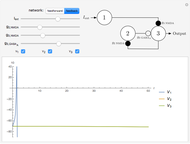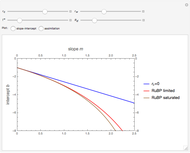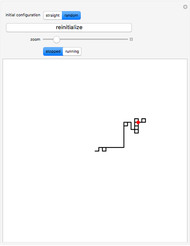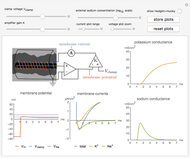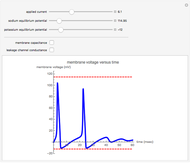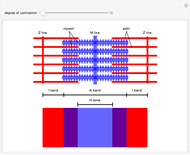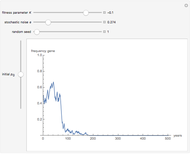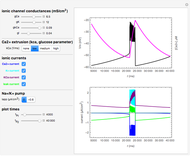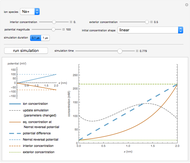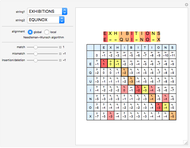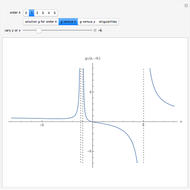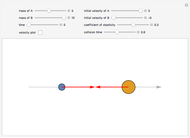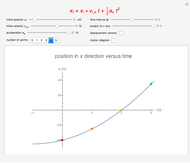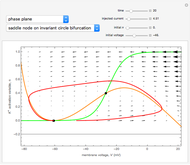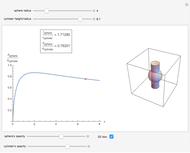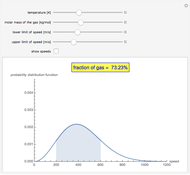This Demonstration simulates the two-dimensional persistent sodium plus potassium ( ) neuron model described in [1].
) neuron model described in [1].
 ,
,
 ,
,
 ,
,
 ,
,
where  is the capacitance density (for the squid axon,
is the capacitance density (for the squid axon,  , so
, so  is fixed and set to one);
is fixed and set to one);  is the voltage across a cell membrane in mV;
is the voltage across a cell membrane in mV;  is the total current density flowing across a patch of the cell membrane in
is the total current density flowing across a patch of the cell membrane in  ;
;  ,
,  ,
,  are the equilibrium potentials (reverse potentials) in mV;
are the equilibrium potentials (reverse potentials) in mV;  ,
,  ,
,  are conductance densities in
are conductance densities in  ;
;  and
and  are the activation variables (probabilities of activation gates to be open) and when with the subscript
are the activation variables (probabilities of activation gates to be open) and when with the subscript  , they are voltage-sensitive steady-state activation functions; and
, they are voltage-sensitive steady-state activation functions; and  is the time constant. Note that
is the time constant. Note that  stands for leak (ohmic leak current density is given by
stands for leak (ohmic leak current density is given by  and it is mostly carried by
and it is mostly carried by  ions);
ions);  and
and  are sodium and potassium ions, respectively. Finally, the Boltzmann functions
are sodium and potassium ions, respectively. Finally, the Boltzmann functions  and
and  each have two parameters:
each have two parameters:  and
and  , where
, where  satisfies
satisfies  and similarly for sodium. The
and similarly for sodium. The  ,
,  are slope factors; that is, they adjust the slope of the Boltzmann functions at
are slope factors; that is, they adjust the slope of the Boltzmann functions at  (smaller values of
(smaller values of  result in a steeper Boltzmann function).
result in a steeper Boltzmann function).
We plot four graphs. The main graph is the phase plane of the potassium conductance versus membrane voltage with the vector field (black), nullclines (orange and green), and voltage trajectory (red) superimposed. We also plot the membrane voltage versus time, sodium ( ) and potassium (
) and potassium ( ) conductances versus time, and membrane currents versus time. Blue corresponds to sodium and green to potassium; nullcline is green as well.
) conductances versus time, and membrane currents versus time. Blue corresponds to sodium and green to potassium; nullcline is green as well.
There are four bookmarks, one for each bifurcation of the resting state. The parameter values for each bifurcation are listed below.

[less]
 Neuron Model
Neuron Model
 ) neuron model described in [1].
) neuron model described in [1].








































